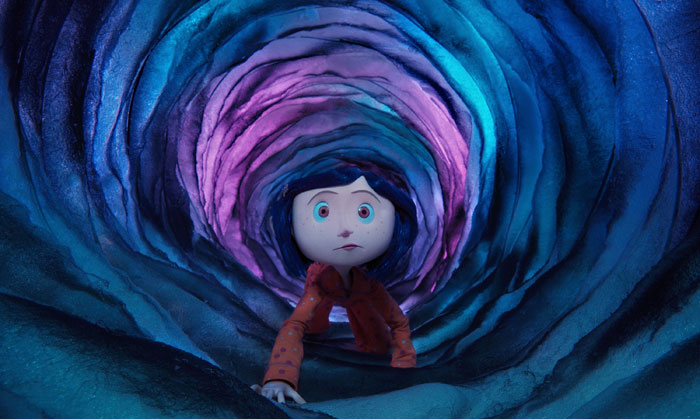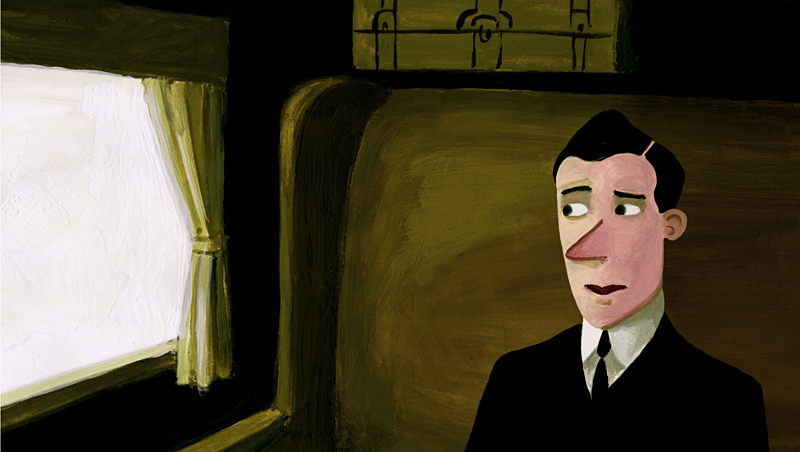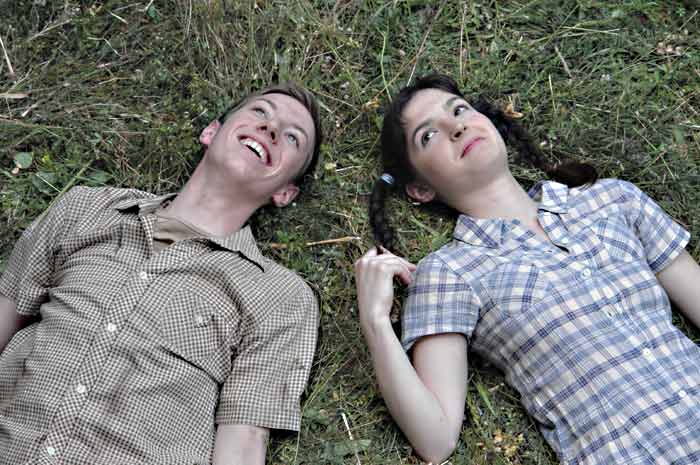If Alice in Wonderland were retold by the Mad Hatter, it might look something like the 3-D, stop-motion Coraline, in which the bored, blue-haired 11-year-old of the title (voiced by Dakota Fanning) travels through the looking glass and ends up in a world that strangely resembles her own—except that everyone has buttons for eyes. There, life is a nonstop carnival, where the fun ends only at bedtime and Coraline’s inevitable return to the slate-colored murk of ordinary life. Until she doesn’t return anymore. Which is when all the enchantments of Coraline’s wonderland begin to creak and crack and spill forth their menacing innards. Adapted by Henry Selick (The Nightmare Before Christmas) from a 2002 novel by Neil Gaiman, Coraline takes root in one of the most primal of children’s fantasies—the desire to escape the clutch of parental authority for a life of boundless wish-fulfillment and adventure. And, like her many literary and cinematic avatars, Coraline soon learns that one must always be careful what one wishes for, lest one end up getting it. Selick avoids using the movie’s 3-D canvas for ostentatious “gotcha” effects, instead employing the enhanced perspective for subtle details of height and distance that would be diminished in the standard 2-D frame. Best of all, he understands that the most affecting fables are those in which sweet dreams turn out to be trapdoors to nightmares. So enter Coraline at your own risk, and watch where you step.
PICK Coraline: A Stop-Motion Wonderland








